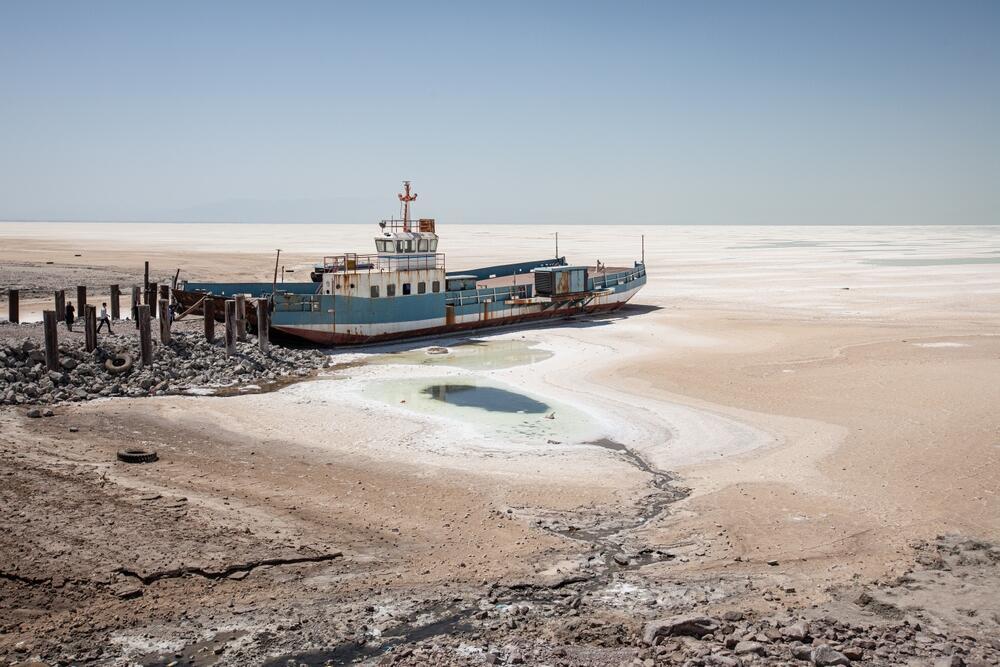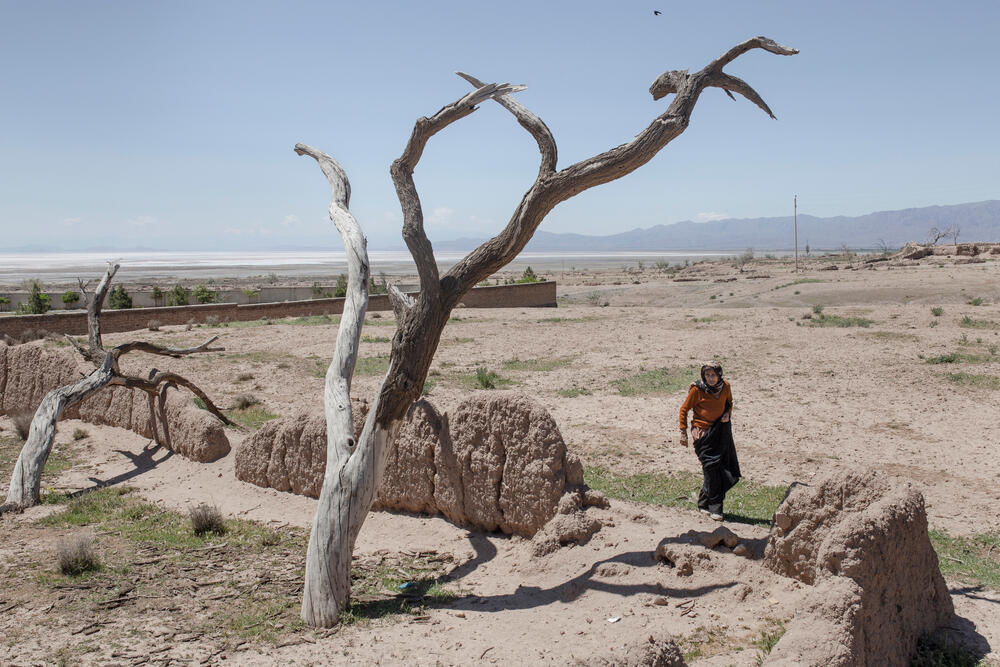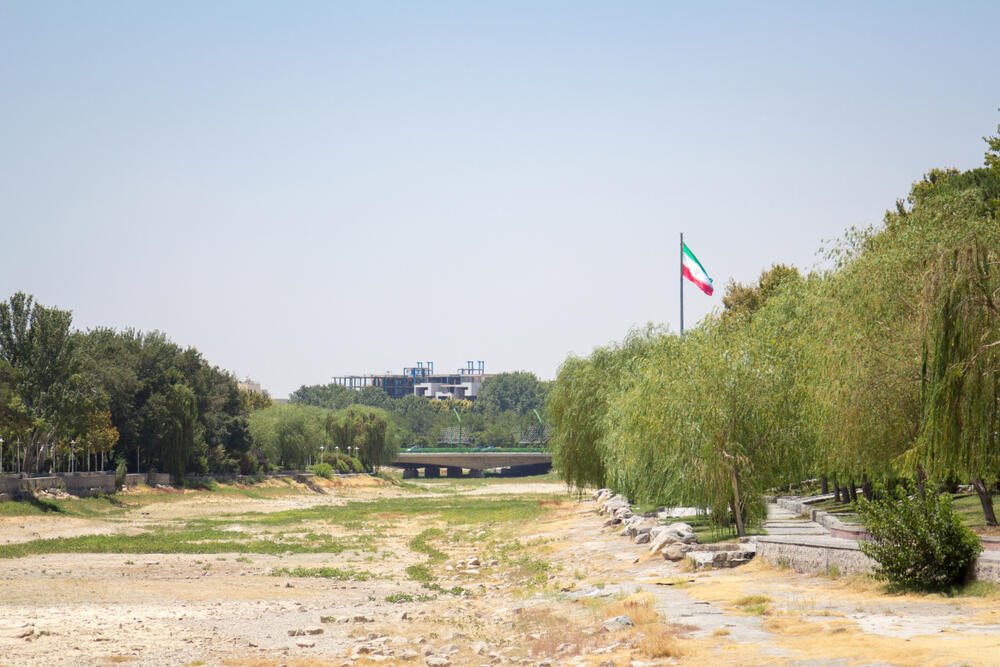Iran has long prepared itself for threats from regional rivals like Israel or geopolitical tensions with the United States. But perhaps one of the most devastating dangers it’s now facing comes not from missiles or sanctions, but from Mother Nature herself.
Across the country, Iran’s land is quite literally sinking. Massive sections of earth are collapsing underfoot, and the cause is alarmingly self-inflicted: over-pumping of groundwater. What began as a quiet environmental issue has escalated into a full-blown national crisis with structural damage, public safety concerns and irreversible ecological consequences.
3 View gallery


Once a body of water, the heat left nothing but sand and a stranded ship behind
(Photos: Sebastian Castelier/Shutterstock)
In a growing number of provinces—particularly Tehran, Kerman and Isfahan—land is subsiding at a rate exceeding 12 inches per year. The slow nature of this descent makes it easy to ignore—until it isn’t. Over time, these inches become feet, leading to burst water pipes, collapsed roads, fractured sewer lines and, increasingly, deep sinkholes that swallow entire cars.
One particularly unsettling incident took place just last month in Kashan, where residents posted footage of cars vanishing into gaping holes in the street. Airports, highways and even train stations have reported alarming damage. Yet despite the gravity of the situation, Iran’s leadership has responded with silence, lacking any serious or enforceable action plan.
Scientists are growing frustrated. Amir AghaKouchak, an environmental engineering professor at the University of California, Irvine, told Forbes that because this land loss happens gradually, it doesn’t capture public attention the way earthquakes or floods do.
“It lacks the dramatic visibility of acute disasters like earthquakes and floods, allowing authorities to underplay its risks,” says Aghakuchack.
In Iran, “this invisibility is a key reason land subsidence remains on the sidelines in national disaster planning, despite its profound long-term consequences,” he adds.
That failure is particularly troubling given Iran’s geography. The country sits atop major fault lines and is one of the world’s most earthquake-prone zones. In fact, just recently, a 5.2 magnitude quake struck roughly 125 miles east of Tehran. Experts warn that if a major quake were to hit urban centers like Tehran, Shiraz or Tabriz—already weakened by years of ground subsidence—the devastation would be magnified.
Dr. Shideh Dashti from the University of Colorado Boulder warned that essential infrastructure—roads, water systems, gas lines and communication networks—are already compromised in sinking zones.
“Imagine a building that has already settled, experiencing tilt, cracks, and problematic connections to an adjacent road or connected lifelines- this building is then in a compromised state if it’s subject to the seismic waves from even a minor earthquake," Dashti told Forbes.
"It may not have the strength to sustain those loads and may be pushed to failure within its foundation system or superstructure- or even collapse,” she adds.
The root cause? Groundwater overuse—specifically for agriculture. Studies show that over 90% of Iran’s extracted groundwater is used for farming, much of it in inefficient or wasteful ways. In Rafsanjan, a major pistachio-producing region in central Iran, water-hungry farming has drained local aquifers dry. In Varamin, just outside Tehran, the ground is collapsing at over 12 inches per year due to excessive water withdrawal.
And the problem isn’t just overuse—it’s uncontrolled drilling. Dr. Farshid Vahedifard of Tufts University noted that in the past two decades, Iran has seen a boom in deep, unregulated wells on top of inadequate enforcement of water governance and the proliferation of deep wells that tap into confined aquifers.
“If current groundwater practices continue unchecked, the loss of aquifer functionality will not only reduce Iran’s long-term water security but also increase the frequency and severity of land deformation,” said Vahedifard.
Get the Ynetnews app on your smartphone: Google Play: https://bit.ly/4eJ37pE | Apple App Store: https://bit.ly/3ZL7iNv
Add climate change to the mix—bringing more frequent and intense droughts—and the pressure on Iran’s underground reservoirs is becoming unbearable. The sinking isn’t just a local issue; it’s a sign of systemic environmental mismanagement.
The bigger problem? Political inertia. According to AghaKouchak, Iran’s ideological governance and ongoing isolation from the global community have stalled development in alternative sectors like tourism and technology—leaving agriculture overly reliant upon and largely unchecked. “Even in the rare occasions where groundwater extraction limits exist, they are often poorly enforced due to judicial corruption and limited monitoring capacity,” he adds.
In a country of over 90 million people, the consequences of ignoring nature’s slow-moving warning signs are staggering. Iran may have braced for military confrontation, but its most destabilizing enemy may be the vanishing ground beneath its feet.



